
How To Fertilise Hot Pepper Plants
There is a fine art to providing your plants with all the nutrients they need. Here's a breakdown of why and how to use fertiliser to maximise the potential of your pepper plants. Trust us; your chillies will thank you. Giving them the right nutrients, at the right times, makes all the difference.
When cultivating chilli peppers at home, it's essential to provide your plants with everything they need to flourish at every point throughout the growing season. This goes much further than just supplying them with water, warmth, and light; Capsicum plants often need a little helping hand in the form of fertiliser to perform to the best of their ability. But what fertiliser should you go for, and how much should you administer? Don't worry! We’ll break down everything you need to know about fertilising pepper plants so you can enjoy top-quality hot peppers in no time.
What is the best fertiliser for hot pepper plants?
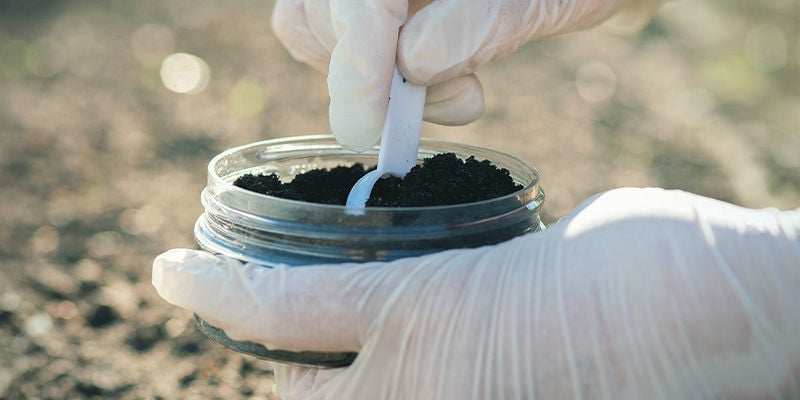
With so many fertilisers on the market today, it can be a little tricky to figure out which are most suitable for your pepper plants. It's possible to purchase time-release fertiliser to feed your plants throughout their entire grow cycle. However, this isn't a viable option for all plants. Before looking to purchase additional fertiliser, it's best to test the nutrient level of your soil first. After all, the nutrient content of organic compost is going to be much different than that of the dirt in your back yard. From here, you can fine-tune precisely how much—and of what kind of—fertiliser to use, without damaging your plants.
The most common fertilisers contain the macronutrients nitrogen, phosphorus, and potassium. When administered, they provide almost everything your plant is after, allowing them to flourish effortlessly. When browsing for fertilisers, you will regularly see three numbers in a row; 5-10-10, for example. These represent the percentage of nitrogen, phosphorus, and potassium, respectively, per bag. While these numbers can vary among different products, it's a uniform and easy descriptor to keep an eye out for when browsing for fertilisers.
Primary and secondary nutrients
Although we’ve touched on them briefly, what nutrients do your pepper plants need to survive and thrive? And how exactly do they help?
By dividing nutrients into primary and secondary categories (i.e. macronutrients and micronutrients), we can get to the bottom of what your plants are hungry for.
Primary nutrients
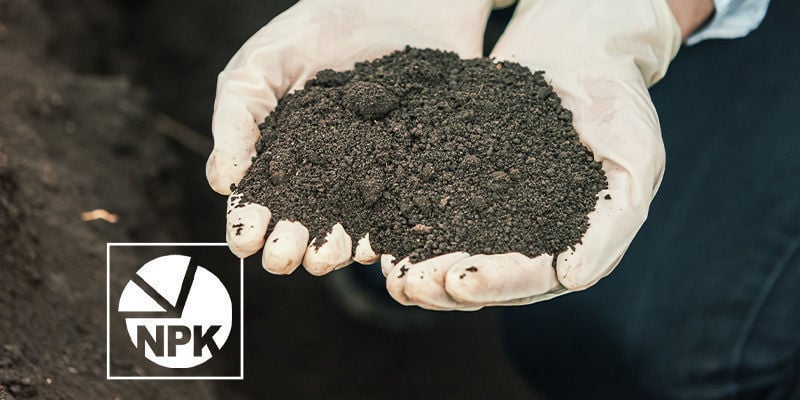
Let’s start with the macronutrients—those your plants need in the highest quantities.
Nitrogen
Essential to the photosynthesis process, nitrogen is a hugely important element in the production of foliage and maintenance of overall plant health. Oftentimes, soil tends to be deficient in nitrogen, so it’s essential to get the levels right so your pepper plants get off to a good start.
Phosphorus
Phosphorus allows your plants to absorb energy from the sun for a much healthier and more resilient growing cycle.
Potassium
Potassium regulates growth and ensures the movement of water, nutrients, and carbohydrates throughout the plant itself. Without proper levels of potassium, photosynthesis can be negatively impacted.
Secondary nutrients
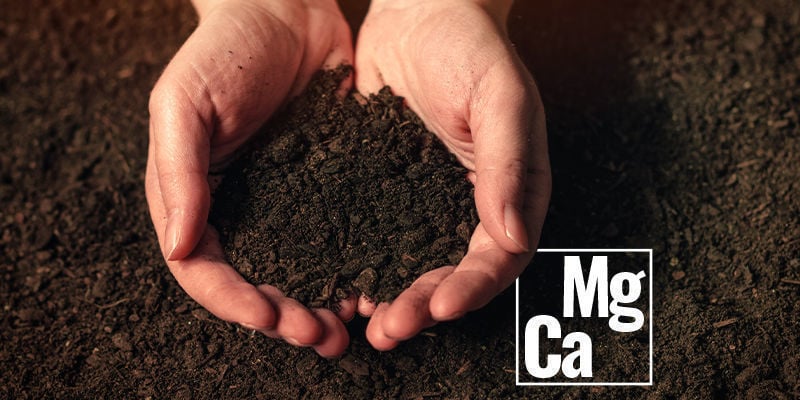
Although deemed “secondary”, these nutrients are just as important as those above, only they’re needed in smaller amounts.
Calcium
Calcium promotes robust development within pepper plants, and is vital to the overall health of your plants. It's unusual for soil to be low in calcium, but it can be easily amended through the use of bone meal.
Magnesium
Magnesium is vital to chlorophyll production, germination, and fruit production. To promote better health for your plants, magnesium should be used sparingly, as too much can cause irreparable damage, and too little can stunt growth as well. A fine balance is needed to ensure the best conditions for the plant.
A note on Epsom salt
To provide plants with a huge hit of magnesium, some turn to Epsom salt. However, this is a hotly disputed method of delivering nutrients to plants. While some believe it helps to improve pepper production and reduce the risk of blossom rot, others suggest the massive surge of magnesium damages the plant, causing issues such as leaf scorch and even impacting the flavour of the resulting peppers.
With that said, we do not recommend it.
How often should you fertilise hot pepper plants?

Like most things in life, timing is very important when it comes to fertilising pepper plants. As mentioned, overdoing it can only lead to damaged plants and subpar fruits. So, what is the best regime for feeding your chillies?
As a rule of thumb, fertiliser should be administered either every week or fortnightly. This often depends on the type of fertiliser being used. Thankfully, the packaging on your product’s container should offer sufficient guidance in terms of timing. Be sure to follow the recommendations and keep a strict schedule, and you can’t go wrong.
When to fertilise chilli pepper seedlings?
Feeding plants that haven't had the time to develop will undoubtedly spell disaster. With this in mind, it's best to wait roughly two weeks after the seed has sprouted, or when it’s produced its first set of true leaves, before administering nutrients. This is a clear indicator that the plant is ready to receive inputs to ramp up growth.
Of course, it goes without saying that smaller plants won't need a huge amount of nutrients, so keep this in mind when starting your schedule, and adjust accordingly as your plants develop. In other words, start light, diluting the fertiliser while the plants are young, and then increase as they begin to flourish.
How to fertilise hot pepper plants
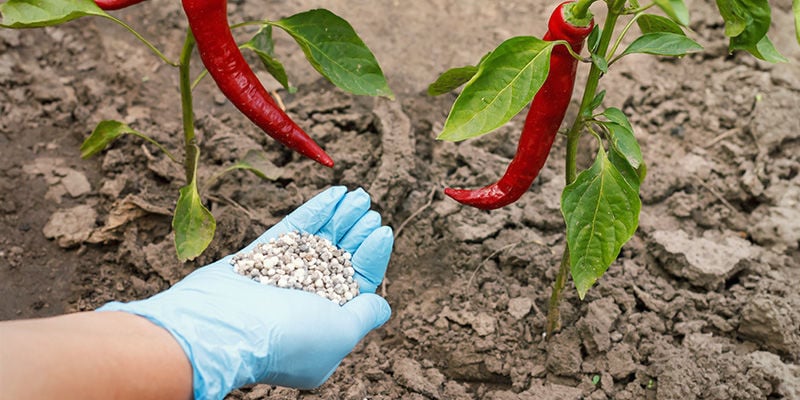
Now that we've got the basics covered, we can begin to offer some practical advice on how to fertilise your pepper plants.
Application: liquid vs granular fertiliser
Pepper growers can administer nutrients either by adding them to the soil or spraying the leaves. The way you apply your fertiliser will largely depend on the specific product type and contents.
Liquid fertilisers are suitable for both of these applications. They first need to be diluted, and then you can water them into the soil as usual, or you can spray the leaves. A simple spray bottle is often enough to achieve this. For example, some pepper growers like to spray their plants with a phosphorus-rich solution to boost growth. Just make sure never to spray in excess, as this will do more harm than good.
Granular fertiliser, on the other hand, is made to be applied to the soil to be taken up by the roots. These formulas are often slow-release in nature, so you may find that one scoopful (for example) is enough to feed your plant over the course of several weeks. Be sure to keep up a regular watering and maintenance routine, and you'll see your plant flourishing with minimal effort.
Should you give nutrients to pepper seedlings?
While many opt to provide nutrients to seedlings, some allow them to first grow of their own accord, only administering fertiliser once they’ve been transplanted into a bigger pot. If you do choose to feed your young plants, be extremely careful with dosing, even halving the product manufacturer’s dose recommendations if necessary.
Hot pepper fertilising tips
While we've hinted at a few pitfalls you can encounter when fertilising your pepper plants, let’s break things down a little further. Here are some common issues and solutions surrounding pepper plant feeding.
Nutrient burn
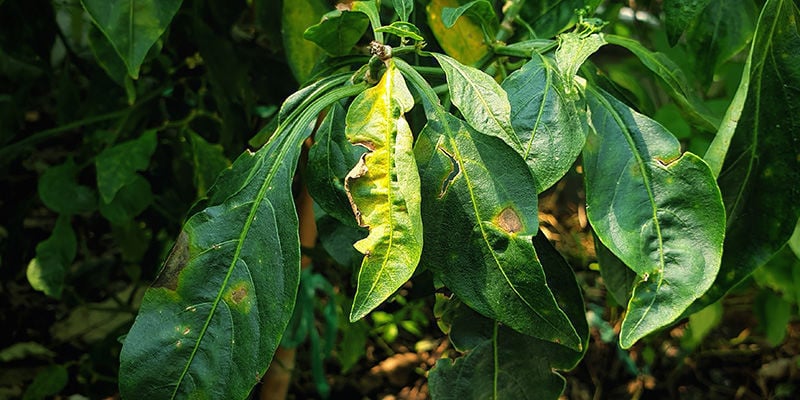
Nutrient burn occurs when pepper plants are exposed to excess nutrients. This condition can be identified by observing the colour of the leaves. If you notice brown spots appearing, this could be a likely warning that your plant is experiencing nute burn. The brown spots themselves are a result of the nutrients travelling through the plant and having nowhere else to go, causing discolouration and burning. However, marks and spots on the leaves can also be an indication of diseases or pests, so be sure to rule those out before looking to amend your fertiliser schedule.
If it turns out that it is nutrient burn, you can easily dial back the amount of fertiliser, and that should be enough for the plant to correct itself. If not, continue with the next point.
Flushing
As mentioned, overuse of fertiliser will only damage your plants, and while dialling back the amount should remedy this, a more thorough method is known as flushing. This is achieved by watering your pepper plants without any additional nutrients—just plain old water. By drenching the substrate until water begins to drain out of the bottom of the container, the remaining nutrients and salts in the substrate will be rinsed out. This essentially “resets” the soil and allows you to administer nutrients again, knowing there isn’t a buildup lurking in the substrate.
While this is the perfect solution for those growing in containers, indoors or outdoors, those growing directly in the ground can flush by administering pure water for a couple weeks before starting up with nutrients again.
Nutrient lockout
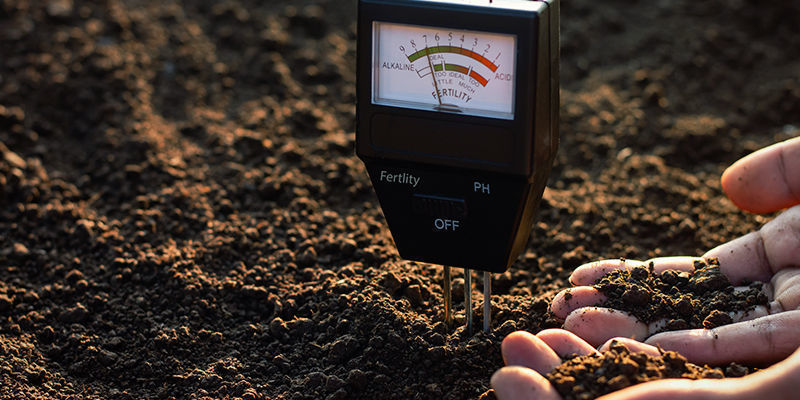
Another issue growers tend to encounter is incorrect pH. When it comes to your growing medium, chilli pepper plants tend to enjoy a pH level of 5.8–6.8. Any higher or lower, and the plant can struggle to absorb the nutrients provided. This phenomenon, known as nutrient lockout, is just as bad as giving your plants no nutrients at all! So it doesn't matter if you've picked up the finest fertiliser filled with all the nourishment your plant needs; if the pH level in the soil is not correct, it won't make a difference.
Check soil pH
So before anything, even before germinating your pepper seeds, check the pH level of your substrate to ensure you're on the right track. This can easily be performed using a pH meter. When it comes time to administer nutrients, make sure your solution is within the ideal pH window, and then measure the soil after feeding to ensure everything looks good.
Keep a close eye on your hot pepper plants
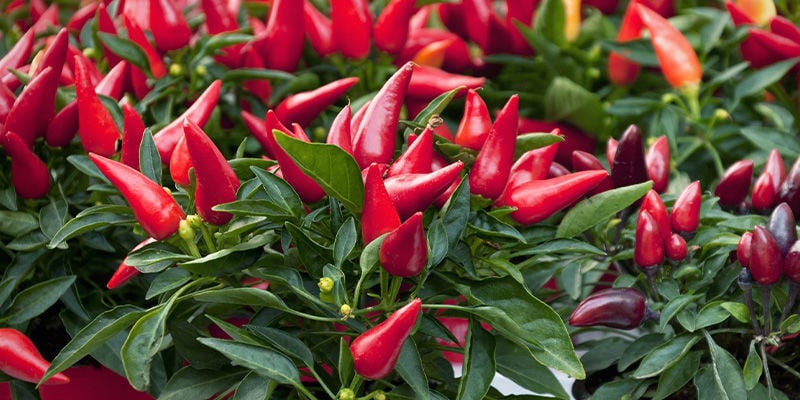
Keeping a regular maintenance schedule is paramount to producing superior chillies. As we've discussed, many symptoms of fertiliser-related issues manifest in the leaves. So be sure to pay attention to any changes in your plants, and you should be just fine.
Of course, dialling in the perfect feeding regimen comes with practice, so if you're new to the process of cultivating chilli pepper plants, don't worry. If you give your plants too much fertiliser, or too little, simply rectify the issue to the best of your ability, learn from your mistakes, and next time you'll have even healthier and better-performing plants!
-
 7 min
4 March 2022
How To Grow Hot Peppers Indoors
Growing chillies might seem like a complicated task, but we're here to tell you that it really needn't be. Even if you don't have an adequate space outside to grow them, you can produce some...
7 min
4 March 2022
How To Grow Hot Peppers Indoors
Growing chillies might seem like a complicated task, but we're here to tell you that it really needn't be. Even if you don't have an adequate space outside to grow them, you can produce some...
-
 4 min
18 February 2022
Tips For Growing Hotter Chili Pepper Plants
Surely it's down to chance just how hot your chili peppers can be, right? Well, while various factors determine spice level, there are actually several things you can do to really get the hottest...
4 min
18 February 2022
Tips For Growing Hotter Chili Pepper Plants
Surely it's down to chance just how hot your chili peppers can be, right? Well, while various factors determine spice level, there are actually several things you can do to really get the hottest...
-
 5 min
24 January 2022
When And How To Harvest Hot Peppers
You've taken the time to cultivate hot peppers, giving them everything they need to flourish throughout their growing cycle. Yet, arguably the most critical moment is fast approaching; when and how...
5 min
24 January 2022
When And How To Harvest Hot Peppers
You've taken the time to cultivate hot peppers, giving them everything they need to flourish throughout their growing cycle. Yet, arguably the most critical moment is fast approaching; when and how...
-
 9 min
5 October 2021
Top 15 Hottest Peppers In The World (2025 Edition)
How does a chili become the hottest in the world? We take a look at the 15 most potent peppers you'll want to get your hands on—or perhaps avoid, depending on how well you can handle the heat! We...
9 min
5 October 2021
Top 15 Hottest Peppers In The World (2025 Edition)
How does a chili become the hottest in the world? We take a look at the 15 most potent peppers you'll want to get your hands on—or perhaps avoid, depending on how well you can handle the heat! We...
-
 7 min
12 August 2021
Growing Peppers For Beginners In 10 Easy Steps
Growing peppers at home can be a hugely rewarding task. Harvesting your own carefully cultivated chilies to use in cooking is a great feeling. But, from seed to harvest, how do you achieve this?...
7 min
12 August 2021
Growing Peppers For Beginners In 10 Easy Steps
Growing peppers at home can be a hugely rewarding task. Harvesting your own carefully cultivated chilies to use in cooking is a great feeling. But, from seed to harvest, how do you achieve this?...
-
 4 min
5 August 2021
Hot Peppers And The Scoville Scale
There's no denying the appeal of spicy food. Whether you're keen on Mexican delicacies, Pad Thai, or Vindaloo curries, they have one thing in common; peppers.
4 min
5 August 2021
Hot Peppers And The Scoville Scale
There's no denying the appeal of spicy food. Whether you're keen on Mexican delicacies, Pad Thai, or Vindaloo curries, they have one thing in common; peppers.













 United States
United States










